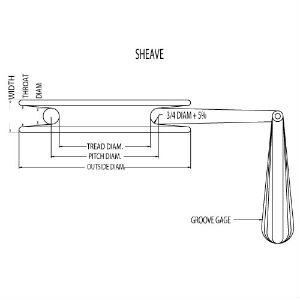 Four considerations to make when putting Bergen cable systems together
Four considerations to make when putting Bergen cable systems together
February 1, 2023 REDWIRE is news you can use from leading suppliers. Powered by FRASERS.
Posted by Bergen Cable Technology, Inc
Mfr Mechanical Cable, Cable Assemblies & Push-Pull Controls. Original Mfr Of Safety Cable, A Patented Fastener Reten... Read more
Subscribe
Free REDWIRE e-newsletter

Bergen is a key source of cable assemblies.
Bergen Cable offers an unmatched range of valuable advice to its customers, based on more than eight decades of experience in the cable industry. One need only turn to the supplier’s website for an extensive source of expert resources and tips for customers about cable systems, from basic information to wire-rope specifications.
One section of the website involves putting cable assemblies together, and it lists the four most important considerations: assembly tolerances, conduit-length tolerances, safety factors in breaking strength, and the relationship between cable diameter and pulley or sheave diameter.
Distance between designated measuring points
Manufacturing processes frequently depend on the overall length tolerances that cable systems require, plus the cable’s cut lengths. This directly affects costs when putting cable assemblies together. Close assembly tolerances are typically more expensive with respect to production and quality control. Customers should ask the Bergen team to review and approve allowable tolerance and inspection methods before production begins.
One should consider the distance between designated measuring points, as shown in the different sections when specifying assembly lengths. These measuring points are usually located at the fittings’ load-bearing points. Commercial tolerance should equal plus or minus two per cent of the length for an assembly lengths of at least 100 feet, while special tolerance should be plus or minus one per cent of the length. These tolerance figures decrease as the lengths do.
The Bergen Cable crew should review acceptable conduit-length tolerances and inspection techniques in advance of production. Overall tolerance must be plus or minus ¼ of an inch for conduit lengths from one to two feet, or 0.062 of an inch for lengths shorter than a foot.
Direct stress and the shock in bending loads when determining the cable’s working load are another crucial factor to consider. The customer should apply a reasonable breaking-strength safety factor to the load. The standard safety factor is five to one in many cases. Finally, pulleys that are designed properly can increase cable fatigue life, so the smallest possible ratios of the tread and cable diameters should be identified in cable systems.
For more information, contact Bergen.
Share
Posted by Bergen Cable Technology, Inc
Mfr Mechanical Cable, Cable Assemblies & Push-Pull Controls. Original Mfr Of Safety Cable, A Patented Fastener Reten... Read more
